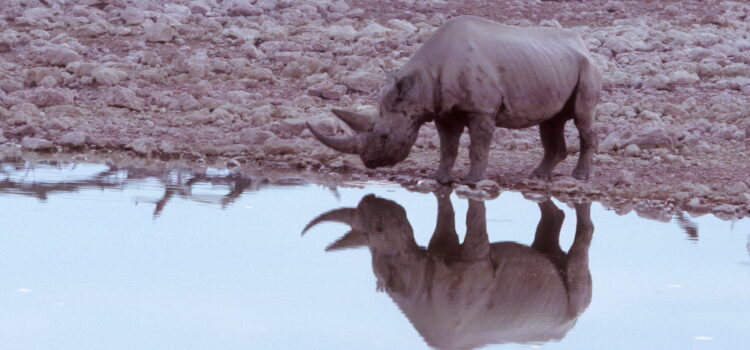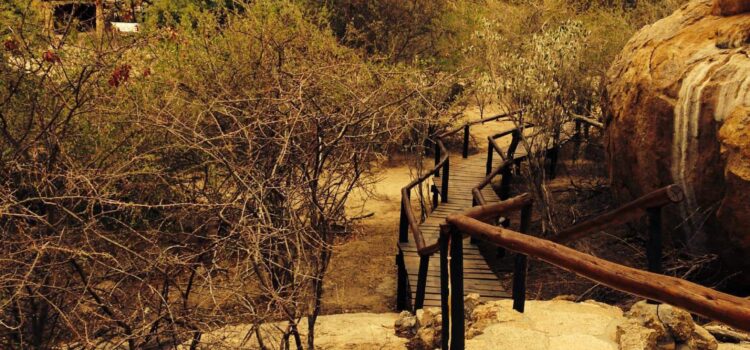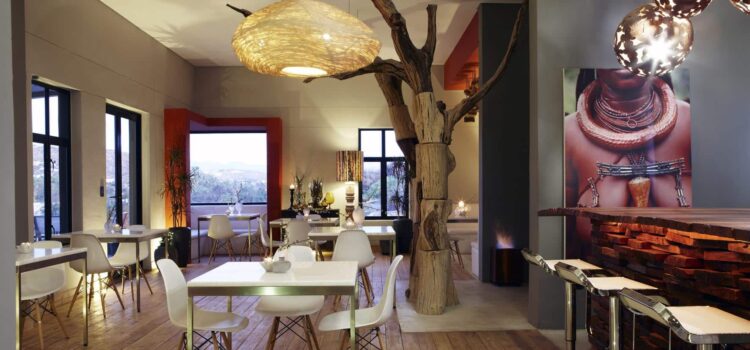Africa can offer up a number of unexpected surprises, brimming with beautiful, raw encounters and unfathomable uniqueness; at times, however, the unexpected borders on the downright bizarre!
Here is a look at some of the more unusual animals you can find when exploring the Southern African sub-continent.
THE AARDVARK
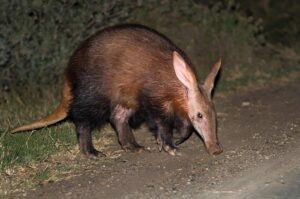
The bizarre thing about this animal starts long before you even reach Africa; it is the first word in the English dictionary, and it is not an English word! The word Aardvark actually originates from 18th century South African Dutch and the direct translation of Aardvark is ‘Earth Pig’ which refers to its pig-like face. Funny enough, the Aardvark is not related to the pig at all and falls into an order all on its own.
In fact, the closest living relatives to the Aardvark are actually the hyrax (Dassie for Southern African natives) and the Elephant! You see there is a family resemblance in that trunk…
This mammal has a strong, short tail, disproportionately large ears and a long, sticky tongue like that of an anteater.
They have adapted to the harsh sub-Saharan Africa environment and can use their spade-like claws to burrow deep holes which they use to comfortably sleep through the heat of the day. They also use those claws to expose termite mounds, and with the help of a 30cm-long sticky tongue, they can easily catch the termites. They can eat up to 60,000 ants and termites in one night. How crazy is that?! The good thing is that they can also close their nostrils to prevent dust or insects from crawling in. They are also quite determined nocturnal animals that will travel between 10 and 30 kilometres every night foraging for food.
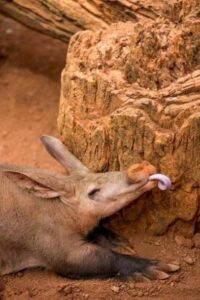
THE CAPE PANGOLIN
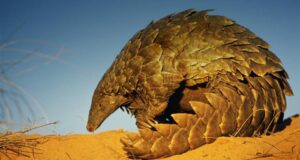
The Cape Pangolin also has a diet that mainly consists of ants and termites, but it looks a little stranger than the Aardvark. In fact, the Pangolin is so bizarre that its closest living relatives are of the order Carnivora (cats, dogs, hyenas, bears and the like!)
Pangolins are also the only mammals to be covered in scales; these scales are made up of keratin, the same substance that makes up your hair and nails, and they make up about 20% of their body weight, which makes the fact that they are frequently hunted for meat and traditional medicine rather paradoxical!
This continued hunting has consequently resulted in them becoming one of the most endangered animals in the world. You rarely see one of these magnificent creatures but that does not mean you should stop looking! They are quite lazy animals; they have sharp front claws that can dig comfortably, but they prefer to snuggle up in abandoned holes to avoid the job of digging their own. Their claws are big and completely unsuitable for walking, but they do what they need to do just to get to the next meal. So here’s a crazy fact about Pangolins; they don’t have teeth, so they can’t chew. Instead, they have keratinous spines in their stomach and swallow stones that help them grind up their food in much the same manner as a bird’s gizzard.
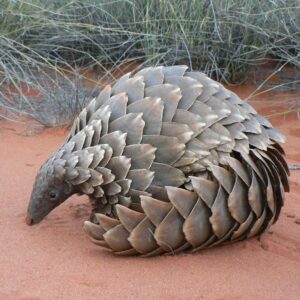
Okay, let’s move on to the weird natural places you might encounter in Africa.
THE FAIRY CIRCLES
The best way to explore Namibia is by self-driving and taking your time. It gives you the freedom and independence to make stops and see the stunning and quite strange parts of the country such as fairy circles. These are circular patches of barren land encircled by grass.
Over the years there have been many theories, some quite mundane and others bordering on the supernatural as to the origins and causes of fairy circles.
Some of our favourites include ‘Earth farts’ – sites where natural gas escape the Earth’s surface, Dragon footprints, radioactive soil and… wait for it… UFO landing sites!
One of the most popular theories was that termite colonies forage in a circular area around their nest which creates the circles, however, this theory was quickly disproved when researchers found that majority of the circles had absolutely no signs of termites ever being there.
There are so many circles that it is hard to believe that they are natural, and to this day we still don’t have an agreed and proven explanation for the fairy circles, whether natural or supernatural, but possibly the strangest thing about the Fairy Circle phenomenon is that they were always believed to only occur in Namibia; recently scientists have discovered near identical fairy circles over 6,000 miles away… in Australia!
Recently a new theory has emerged, one that could explain the cause of the fairy circles and one that does lean towards being plausible. The theory is that plants, caring as they are, help their nearest neighbour by creating shade and maintaining water in the soil surface. However, the plants that are a little further away from the stronger plants get deprived of water. So essentially the plants that are stronger and have deeper routes will help those closest to them, but the weaker plants that are further away from the stronger ones will die off and the circles form where the weaker ones die off. This is where the rule of nature takes its course, the strong will always overpower the weak or those who travel in groups always win. You can choose which one….
BOURKE’S LUCK POTHOLES
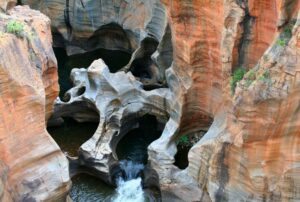
Normally when you think of a pothole, it’s as a stupid thing you have to dodge every time you see it. However, Bourke’s Luck pothole isn’t one of those potholes you just want to dodge.
This natural geological formation is found in South Africa, the Mpumalanga area, and marks the beginning of the Blyde River Canyon.
It was formed by centuries of water from the Treur River plunging into the Blyde River and forming the cylindrical potholes in the bedrock.
The irony of the Bourke’s Luck potholes is that they proved to be ‘not so lucky’. They were originally discovered by Tom Bourke in the 1880’s when he staked a claim nearby, and whilst his claim did not yield a single ounce of gold, he was correct in his prediction that there were massive alluvial gold deposits in the area!
There are a number of bridges that cross over these formations and allow visitors to see the spectacular art work of nature from different vantage points. The great thing about this place is that you don’t have to be a geologist to appreciate the beauty and intricacy of the formations. This is definitely one of the great natural sites that Africa has to offer, and something that should be on everyone’s list
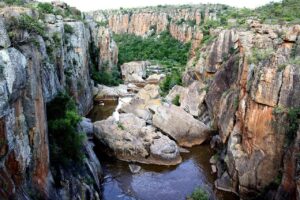
Africa sure does have a lot to offer; explore the magnificent landscapes and learn more about our bizarre animals. There is something for everyone, and hard not to mention how the South African Airways offer the best services!
Contact the ATI team and let us plan your next tailor-made holiday! info@ati-holidays.com
